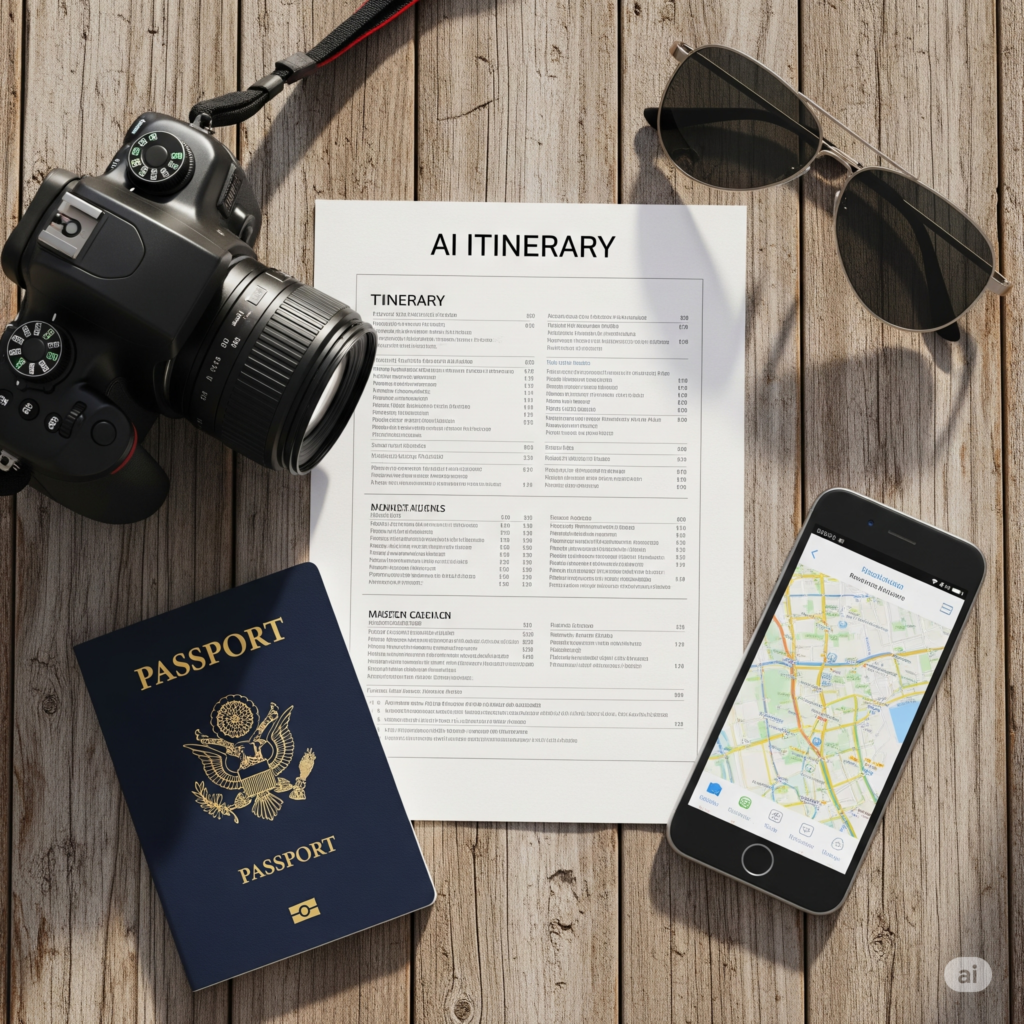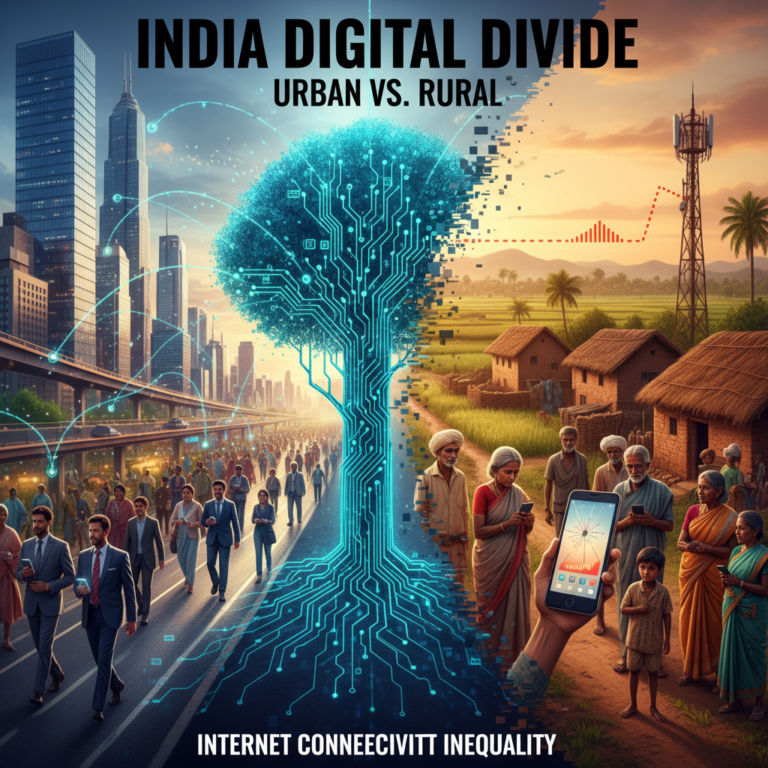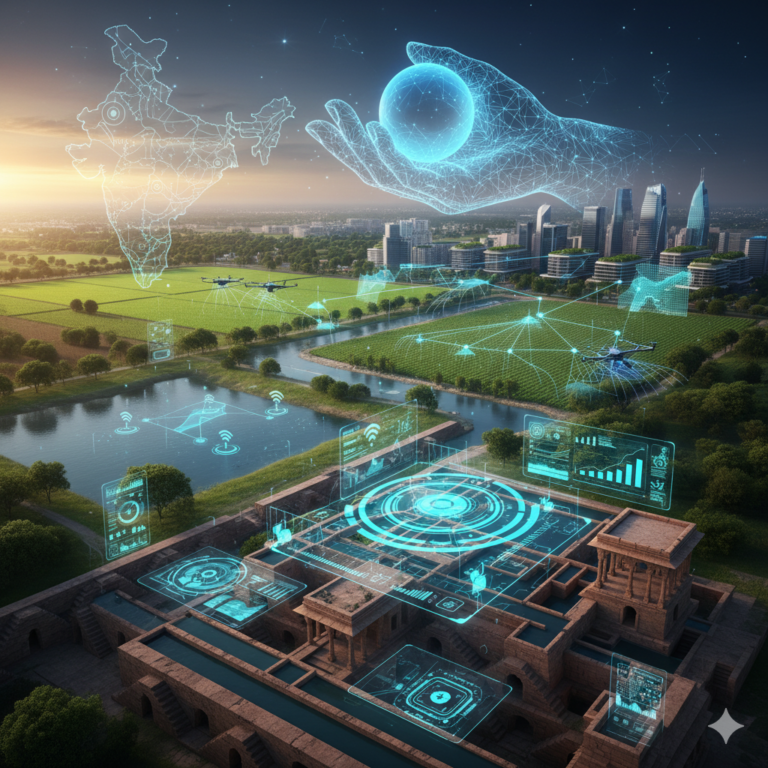Travel Planning in the Age of AI
Gone are the days of flipping through guidebooks or endlessly Googling “best things to do in Paris.” Today, many travelers use AI tools like ChatGPT, Roam Around, Kayak’s AI assistant, and even Google’s Gemini Travel Planner to build itineraries in seconds.
But how reliable, authentic, and customized are these AI-generated travel plans?
This blog breaks down:
- What AI travel planners are good at
- Where they fall short
- Real use cases
- Tips to get the best out of AI-powered itineraries
🤖 What Are AI-Generated Travel Itineraries?
AI-generated itineraries are travel plans created using machine learning tools trained on:
- Maps
- Reviews
- Travel blogs
- Booking platforms
- User preferences and large datasets
They can offer personalized schedules including:
- Daily activities
- Flight and hotel suggestions
- Local restaurants
- Transportation tips
- Weather-specific recommendations
Examples:
- “Plan a 5-day solo trip to Tokyo under $1000”
- “Create a romantic weekend itinerary in Goa”
- “Family-friendly Paris tour with museum passes”
✅ What AI Travel Itineraries Get Right
1. Speed and Convenience
AI can give you a complete 7-day itinerary for Rome in under 20 seconds. It saves hours of manual searching.
🧠 Example: A user asked ChatGPT to plan a “budget solo trip to Istanbul,” and received a 5-day plan with hostel suggestions, walking tours, and metro routes—instantly.
2. Customization at Scale
You can tell AI your:
- Budget
- Travel pace (relaxed vs. packed)
- Dietary restrictions
- Travel companions (kids, seniors, pets)
AI can then recommend vegan cafes, wheelchair-friendly attractions, or quiet beaches accordingly.
3. Offbeat Recommendations
Because AI has read millions of niche blogs and user reviews, it can suggest non-touristy gems like:
- Hidden rooftop cafes in Seoul
- Abandoned castles in Slovakia
- Local flea markets in Berlin
4. Dynamic Planning Based on Real-Time Info
Advanced tools (like Google Gemini + Bard integrations) factor in:
- Weather forecasts
- Local strikes or closures
- Real-time traffic data
This helps users re-plan on the go.
5. Itinerary Formatting & Summarization
AI can export:
- Bullet-point plans
- Visual Google Maps
- Editable Notion boards
- Print-ready PDFs
This makes sharing plans with friends/family easy and clean.
❌ Where AI-Generated Itineraries Fall Short

1. Over-Optimization
AI tends to create over-packed itineraries:
- Visiting 5–7 spots per day
- No buffer for local spontaneity
- Underestimates transfer times or rest needs
This is especially problematic for:
- Families with kids
- Senior travelers
- Slow travelers or photographers
2. Lack of Local Nuance
AI may:
- Recommend places that are permanently closed
- Miss cultural etiquette tips (e.g., dress code at temples)
- Suggest tourist traps instead of local-approved spots
⚠️ Example: AI might suggest “Elephant rides in Jaipur” without understanding modern ethical concerns.
3. Too Reliant on Past Data
AI models are trained on past content, which may be outdated:
- COVID-era restrictions
- Festival or market schedules that vary yearly
- Hotels/restaurants that are no longer in business
🧪 Only AI tools linked to real-time APIs (like Kayak or Hopper) offer better freshness.
4. Lack of Emotional Intelligence
AI doesn’t understand:
- Mood-based choices (e.g., “skip sightseeing, I just want beach sunsets”)
- Personal quirks (e.g., introvert-friendly cafes, pet peeves)
You still need a human lens for that “this feels right” moment.
🧳 Case Study: 3-Day Goa Itinerary—Human vs AI
| Category | AI Output | Human Local Insight |
|---|---|---|
| Beach Time | Baga, Calangute, Anjuna | Cola Beach, Butterfly Beach (less crowded) |
| Food | Fisherman’s Wharf | Suzie’s, Cantare (local gems) |
| Activities | Fort Aguada, Chapora | Spice farm tour, Latin quarter walk |
| Pace | 8–10 stops/day | 4–5 relaxed activities |
| Verdict | Efficient but generic | Personal, cultural, emotionally resonant |
🔧 Tips to Get the Best AI Travel Plan
- Be Specific:
“Solo traveler in 30s, loves museums + street food” → better results - Request by Mood or Style:
“Chill and meditative trip with few crowds” - Ask for Local Customs:
“Add 3 cultural etiquette tips for visiting Japan” - Set Time Blocks:
“Plan with 1–2 major sites/day and 2–3 hours downtime” - Cross-Check with Google Maps & Reviews
🌐 Best AI Tools for Travel Itineraries (2025)
| Tool | Strength |
|---|---|
| Roam Around | ChatGPT-powered trip generator |
| Google Gemini Travel | Real-time, integrates maps, weather |
| Kayak AI Assistant | Live bookings, flights, hotels |
| Wonderplan | Good for visual planners and first-timers |
| Tripnotes.ai | Drag-and-drop itinerary with maps and notes |
| Curiosio | Road trip-focused AI with drive-time calculations |
🧠 The Future: What’s Coming in AI Travel
- Voice-powered itinerary edits on the go
- AR + AI combo for live walking tours
- Integration with wearables (mood-based recommendations!)
- Sustainability filters (low-carbon travel suggestions)
- Hyperlocal recommendations from real-time tourist foot traffic
🏁 Conclusion: Use AI, But Don’t Forget the Human Touch
AI-generated itineraries are fast, powerful, and evolving fast. They’re perfect for:
- First-time explorers
- Budget travelers
- Quick planners
But the magic of travel often lies in:
- Wandering off-plan
- Talking to locals
- Discovering hidden gems
Let AI handle the structure. But let you write the story.
“Travel isn’t about checking boxes. It’s about creating moments AI can’t predict.”









+ There are no comments
Add yours